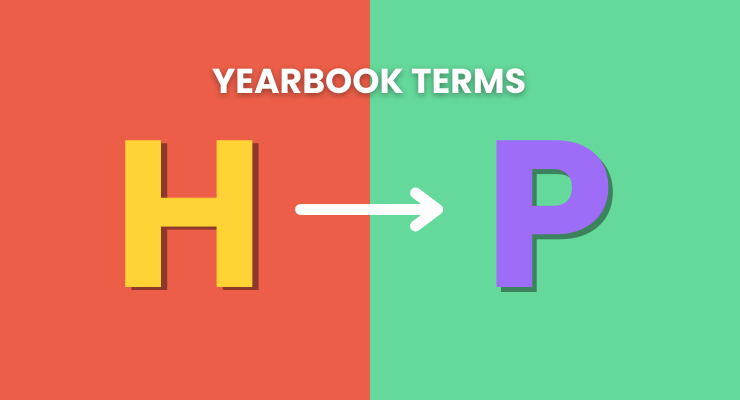Here are a few more terms that you and your team should get familiar with. Learning these terms will greatly improve the communication of everyone involved in developing the yearbook and allow the organization of tasks to be more efficient.
Terms H to P
Headline. A headline is a set of words placed at the beginning of a passage or page that are used to conceptualize the content and introduce the key ideas being presented to the reader. Headlines are made with large font sizes to distinguish them from the other text.
Kerning. Kerning is the process of adjusting the space between individual letters or characters to create a visually pleasing and legible body of text.
Ladder. A ladder is a diagram that lays out the content to be displayed on each page of the yearbook. It helps organize the sections so that there is consistency in the way the content is shown.
Layout. A layout is a design structure for a page in a yearbook. It establishes the composition of the design elements and subject matter to attract the attention of viewers and increase readability.
Lead (or Lede). The lead introduces the news story. It is usually found in the first sentence or paragraph. The lead is intended to give the reader the most important information.
Leading. Leading is the space between lines of text. By increasing the leading of a text block, it increases its readability, while decreasing the leading will allow more text to fit on a page.
Modules (or Mod). A module is an excerpt or sidebar that contains additional information which supports a page’s main story. The modules are usually composed of small images and text that may include case studies, metrics, photographs, etc.
Monospaced Fonts. Monospaced fonts are typefaces that have the same width for each character so that fonts take up an equal amount of horizontal space.
Orphans. An orphan is an opening line of a paragraph that is isolated from the rest of the text and found at the bottom of the page.
Pica. A pica is a unit of measurement, used in yearbook layouts to determine the width of the design elements. Picas are equivalent to ⅙ of an inch.
Portraits. Portraits are photographs, paintings and other forms of art that highlight the face and expression of a subject. In portraits, the subject is posing for the artist or photographer so that they can capture the subject’s features.
Proof. A proof is the final draft of the yearbook pages that is reviewed by staff to ensure that the yearbook is without flaws and ready for production.
Proofreading. Proofreading is the process of analyzing the final draft to catch any corrections that need to be made before the yearbook is sent out to print. This process is essential to catching typos and formatting errors so that quality standards are met and the yearbook is easy to read.
Pull Quote. A pull quote takes a phrase or quote from a body of text and uses it as an attention-grabbing graphic element. It’s used to emphasize a key topic or point in a story and it is usually in large text to draw the reader’s attention.


